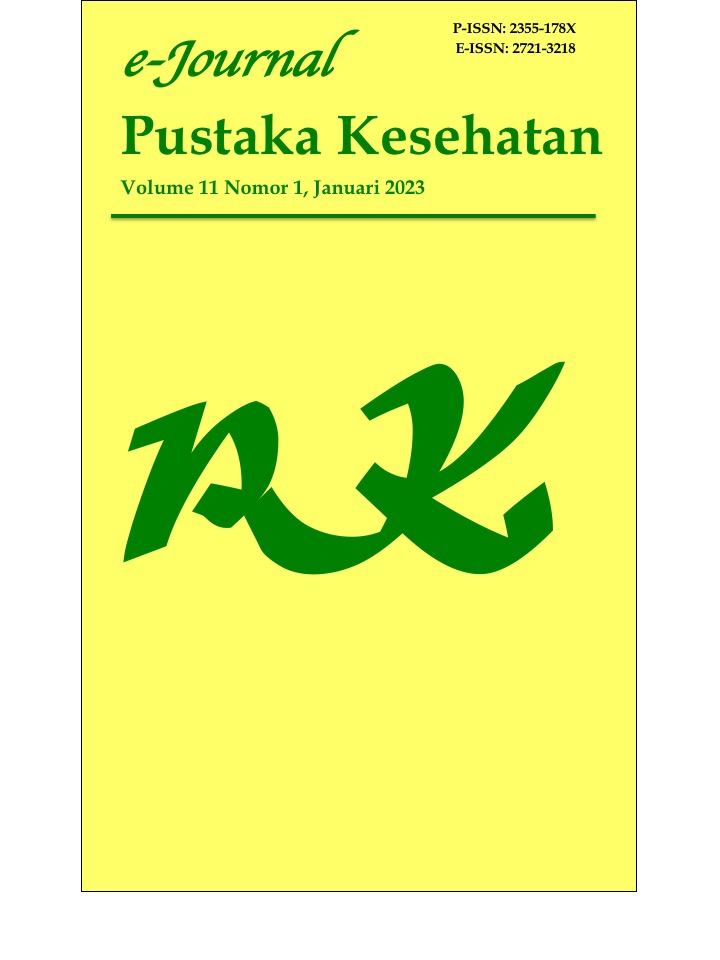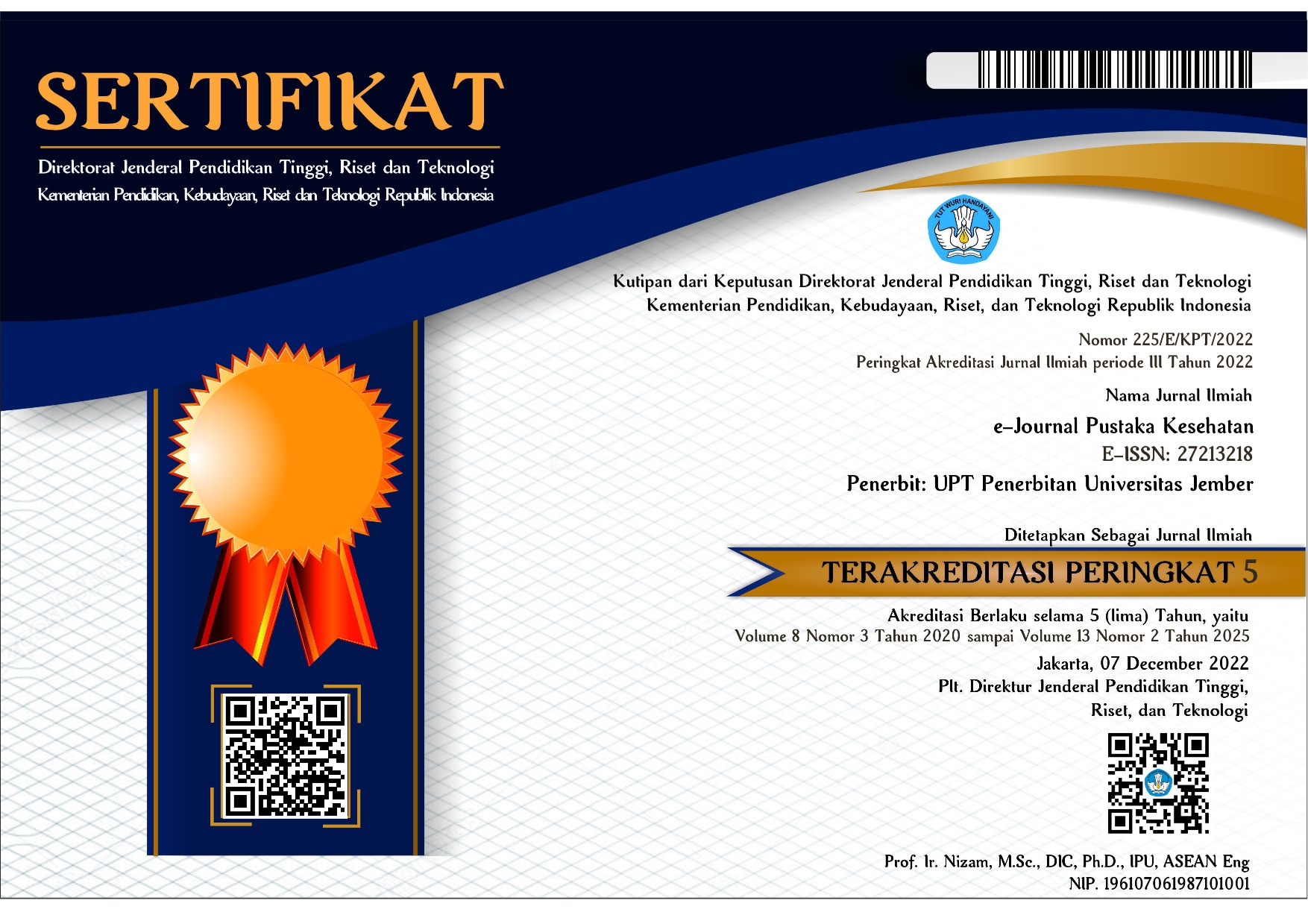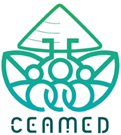Pola Peresepan Obat pada Pasien Diare Anak di Instalasi Rawat Inap RSUD dr. Abdoer Rahem-Situbondo
DOI:
https://doi.org/10.19184/pk.v11i1.16608Keywords:
diarrhea; patients aged 0-10 years; prescribing patternAbstract
Diarrhea is defined clinically as increased bowel movements more than three times a day, accompanied by changes in stool consistency (becoming liquid) with or without blood within 24 hours. This disease often occurs in patients aged under five to children - children, usually lasts for several days, so that the body can lose important fluids such as water and salt needed for survival. Most patients die from diarrhea due to severe dehydration and fluid loss. This research was conducted to determine the pattern of drug prescription in pediatric diarrhea patients which includes the types and classes of drugs and how to administer the drug. The research method used was purposive sampling and using a retrospective descriptive approach. The sample of this study was diarrhea patients for children aged 0 months to 1 year who received treatment at the inpatient installation at RSUD dr. Abdoer Rahem Situbondo from January to December 2019. The treatment of diarrhea treatment included rehydration, antidiarrheal, antimicrobial, analgesic-antipyretic and other drug classes such as antacids, anticonvulsants and mucolytics. From 108 samples of pediatric diarrhea patients found 82 patients (75.96%) used antimicrobial drugs.
Downloads
References
[2] Zein, Umar., Sagala, Khalid guda, Ginting joia, 2004. Diare Akut Disebabkan Bakteri. E-USU Repositori; 2004.
[3] World Health Organization, 2005. The Treatment of Diarrhoea : A Manual for Physicians and Other Senior Health Woker, World Health Organizations, Geneva.
[4] Goodman dan Gilman. 2003. Dasar Farmakologi Terapi Edisi 10 Volume 2. Jakarta; EGC, (1009-1012).
[5] Kementrian Kesehatan RI. 2016. Pusat Data dan Informasi. Jakarta Selatan: Kemenkes RI.
[6] Kementerian Kesehatan RI. 2013. Pusat Data dan Informasi. Jakarta Selatan: Ke- menkes RI.
[7] Dinas Kesehatan Kabupaten Situbondo. 2014. Profil Kesehatan Kabupaten Situ- bondo Tahun 2014. Situbondo: Dinas Kesehatan Kabupaten Situbondo.
[8] Soebagyo. 2008. Diare Akut Pada Anak.Surakarta:Universitas Sebelas Maret Press.
[9] Baldassano, R.N., Cochran, W.J. 1998. Clinical pediatric gastroenterology. Philadelphia: Chruchill Livingstone, 9- 18
[10] Suharyono. 2008, Diare Akut : Klinik dan Laboratorik. Jakarta : Rineka Cipta.
[11] Soewondo, E.S., 2002. Penatalaksanaan diare akut akibat infeksi (Infectious Diarrhoea). Surabaya : Airlangga University Press: 34-40.
[12] Departemen Kesehatan RI, 2011. Buku Saku Petugas Kesehatan, Edisi 4. Jakarta:
Ditjen PPM dan PL
[13] Strina A, Cairncross S, Barreto M.L, Larreca C, Prado MS. 2003. Childhood diarrhea and observed hygine behavior and salvador brazil. Am J Epidemiol 157: 1032-1038.
Downloads
Published
Issue
Section
License
e-Journal Pustaka Kesehatan has CC-BY-SA or an equivalent license as the optimal license for the publication, distribution, use, and reuse of scholarly work. Authors who publish with this journal retain copyright and grant the journal right of first publication with the work simultaneously licensed under a Creative Commons Attribution-ShareAlike 4.0 International License that allows others to share the work with an acknowledgment of the work's authorship and initial publication in this journal.







